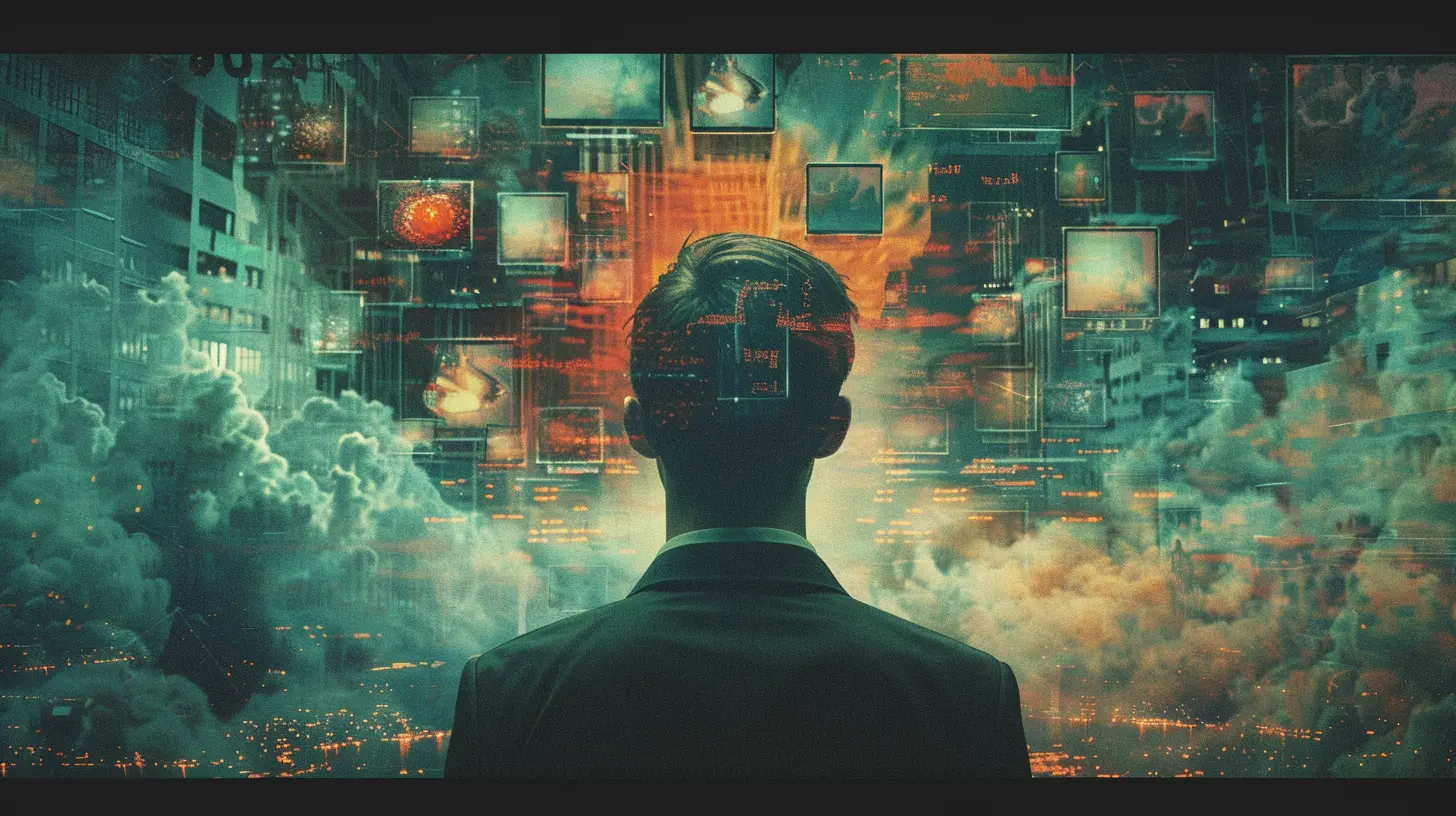Managing Attention Deficit Disorder in a Digital World
20 November 2025
Let’s face it — living with Attention Deficit Disorder (ADD) in today’s hyper-connected world is like trying to read a book while someone flips the TV, microwave, and a vacuum cleaner on high volume. The constant pings, pop-ups, and scrolling feeds make it harder than ever for someone with ADD to stay focused. But here’s the good news: managing ADD is not about unplugging from the digital world — it’s about learning how to live smartly within it.
In this guide, we're going to break down how you can navigate the digital maze without letting it hijack your focus.
What Is Attention Deficit Disorder (ADD)?
Before we jump into the nitty-gritty of managing ADD in this tech-driven age, let’s clear the air on what ADD actually is.Attention Deficit Disorder, often grouped under the umbrella of ADHD (Attention-Deficit/Hyperactivity Disorder), is a neurodevelopmental condition that affects one’s ability to concentrate, organize tasks, follow through, and stay engaged. People with ADD often struggle with time management, forgetfulness, and a tendency to get distracted easily — especially when they’re bombarded with sensory and digital stimuli.
Important to note: ADD is often used interchangeably with ADHD-Inattentive Type, though "ADD" is the more old-school term.
Why the Digital World Is Especially Tough for People With ADD
Think about the endless rabbit holes offered online. You start by checking your email, and 20 minutes later, you’re watching a video of a raccoon using a vending machine. Sound familiar?Now, imagine that scenario with a brain that’s already wired to wander. The digital world, while amazing in many ways, is basically a playground for distractions. It’s full of:
- Constant notifications
- Social media dopamine traps
- Information overload
- Multiple open tabs (guilty, anyone?)
- Always-on connectivity expectations
These digital dynamics are like kryptonite for someone with ADD. They don’t cause ADD, but they sure don’t make it any easier to handle.
Recognizing the Signs: Is the Digital World Worsening Your ADD?
Here's something to think about. Are you:- Switching between apps every few minutes?
- Starting dozens of tasks and finishing none?
- Feeling mentally exhausted but not actually productive?
- Finding it harder to read a book or even finish a movie?
If you’re nodding along, you’re not alone. The digital environment can amplify existing ADD symptoms or even mimic them in people who don’t have an official diagnosis. For those with ADD, the effects are just more intense and long-lasting.
Strategies for Managing ADD in a Digitally Distracting World
Alright, let’s get into the good stuff — the practical strategies that actually work.1. Create a Digital Environment That Works With You, Not Against You
Think of your digital setup as your workspace. Just as a cluttered desk can throw off your focus, so can a cluttered phone or computer.Try This:
- Turn off non-essential notifications — Yep, even social media ones.- Use “Focus Mode” or “Do Not Disturb” features on your devices during deep work.
- Declutter your apps — fewer icons = fewer distractions.
- Unsubscribe regularly from email lists that don’t serve you.
A digital detox doesn’t mean throwing your phone into a lake. It means taking control of what shows up on your screen.
2. Leverage Technology to Your Advantage
Here’s a twist: the same tech that distracts you can actually help you stay on track — if you know how to use it wisely.Helpful Tools for ADD:
- Task management apps: Todoist, Trello, or Notion can help structure your day.- Time-blocking calendars: Google Calendar or Sunsama can help you allocate time and stick to it.
- Pomodoro timers: Apps like Focus Booster help you work in 25-minute focus sprints followed by short breaks.
- Auditory focus aids: Try white noise or focus playlists (Brain.fm is a fan favorite).
Technology can be your co-pilot, not your distracting backseat driver.
3. Build and Stick to Routines
Routine might sound boring — but for someone with ADD, it’s a lifesaver. Having a consistent structure to your day helps reduce the mental chaos and prevents you from relying on willpower every five minutes.How to Do It:
- Set up morning and evening rituals to anchor your day.- Have designated work hours to give your brain boundaries.
- Use visual timers (like Time Timer) to keep track of how long a task is taking.
You don’t need a rigid schedule, but you do need some structure. It’s like giving your brain bumpers when it wants to veer off track.
4. Be Ruthless About Prioritization
When you have ADD, everything can feel urgent and important. That’s why decision fatigue sets in so fast. The trick? Simplify your choices.Try This:
- Use the “Rule of Three”: Each day, choose three top tasks to complete — no more.- Keep a “Later List” for ideas that pop in but aren’t important right now.
- Tackle harder tasks first thing when your energy’s highest.
ADD brains love novelty, but too many choices = paralysis. Narrow it down, and breathe easier.
5. Embrace Mindfulness and Physical Activity
Wait, what do exercise and mindfulness have to do with ADD and screens? A lot actually. The more time we spend staring at screens, the less we move and engage with the real world. This creates a build-up of nervous energy that adds to the overwhelm.Solutions You Can Start Today:
- Meditation apps like Headspace or Calm (even just 5 minutes can help).- Walking meetings or stretched-out breaks.
- Try body-doubling — doing tasks while someone else is present, either in person or virtually (yes, it actually helps).
Mindfulness isn’t about zoning out; it’s about zoning in. It re-trains your brain to pause, observe, and respond — instead of react.
6. Know When to Log Off
Digital burnout is real, and for people with ADD, it kicks in faster — and lingers longer. That’s why you need healthy boundaries with your devices.Set Clear Digital “Off” Hours:
- No screens 1 hour before bed.- No phone at meal times.
- One “device-free” evening each week.
Think of it like giving your focus muscle a rest day. You wouldn’t work out every moment of every day, right? Your brain deserves the same kindness.
What About Kids and Teens With ADD?
Ah yes, the younger generation. If adults are having a tough time keeping their focus in the digital age, imagine how hard it is for kids and teens with developing brains.How You Can Help Them:
- Set screen time limits without shaming.- Offer alternative activities that aren’t screen-based but still engaging (puzzles, art, sports, etc.).
- Model healthy digital behavior — they’re watching what you do.
And maybe, just maybe, talk to them. Ask, don’t dictate. Kids with ADD are often hyper-aware of how different they feel. Let them know they’re not broken — they just think differently. Tech isn’t the enemy. It’s about helping them find balance.
Professional Help Is Still Key
While all these strategies are great, sometimes you need more than just lifestyle tweaks. If your ADD symptoms are getting in the way of your relationships, work, or mental health, it might be time to talk to a mental health professional.There are coaches, therapists, and psychiatrists who specialize in ADD. They can help you figure out if medication, behavioral therapy, or personalized coaching is right for you.
Remember — asking for help isn’t a weakness. It’s the smartest move you can make.
Final Thoughts
Managing Attention Deficit Disorder in a digital world isn’t about resisting technology. It’s about learning how to navigate it intentionally. The key is creating systems that work for your brain, not against it. Whether that’s setting boundaries, using the right tools, or rethinking your routines — you have way more control than you might think.And if you’re reading this and thinking, “Wow, that’s me to a T,” take a deep breath. You’re not alone, and it’s never too late to take back your focus.
Living with ADD doesn’t mean you’re doomed to distraction. It means your brain works differently — and with the right hacks, habits, and mindset, you can thrive in this noisy digital world.
all images in this post were generated using AI tools
Category:
Attention Deficit DisorderAuthor:

Nina Reilly
Discussion
rate this article
1 comments
Pierce Lynch
In a world filled with distractions, managing Attention Deficit Disorder can be challenging. Remember, you are not alone. Embrace small, mindful steps towards focus and self-care. Every effort counts, and with persistence, you can thrive amidst the noise. Stay positive and keep pushing forward!
November 20, 2025 at 4:10 AM


